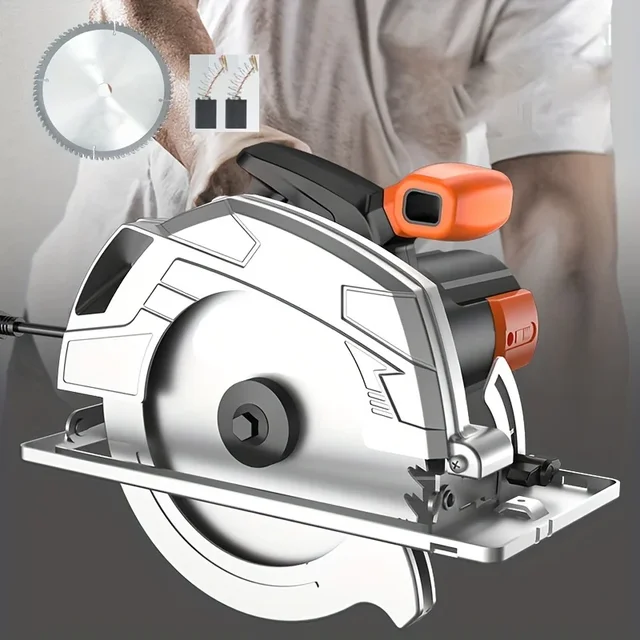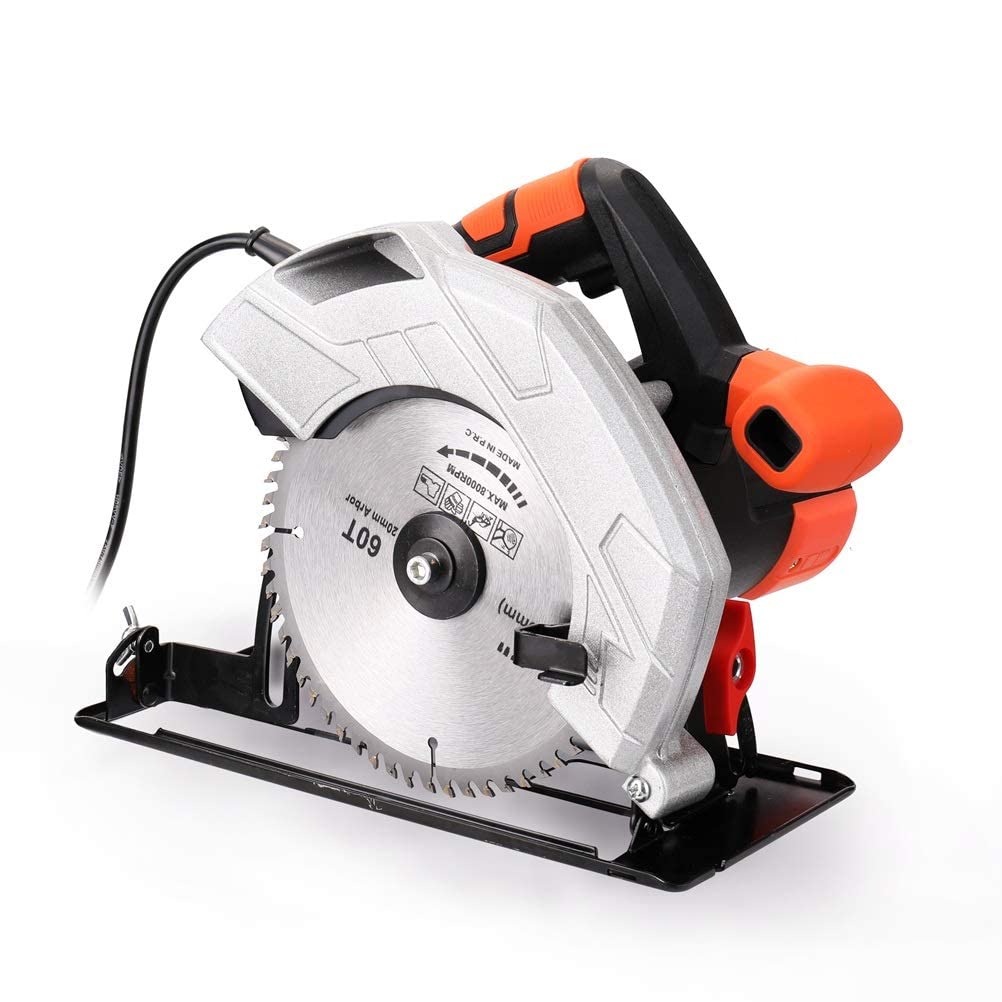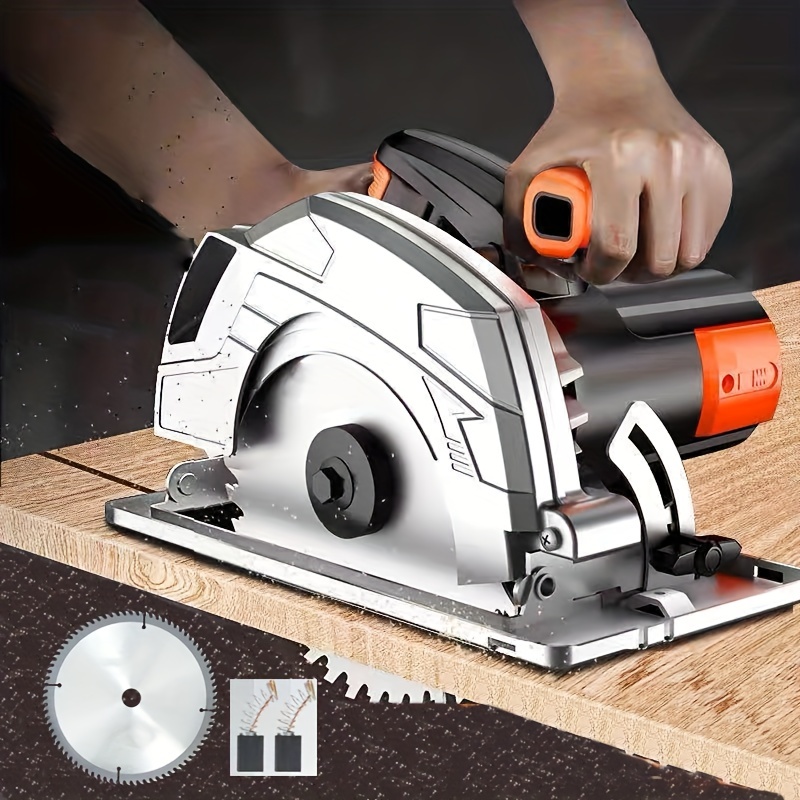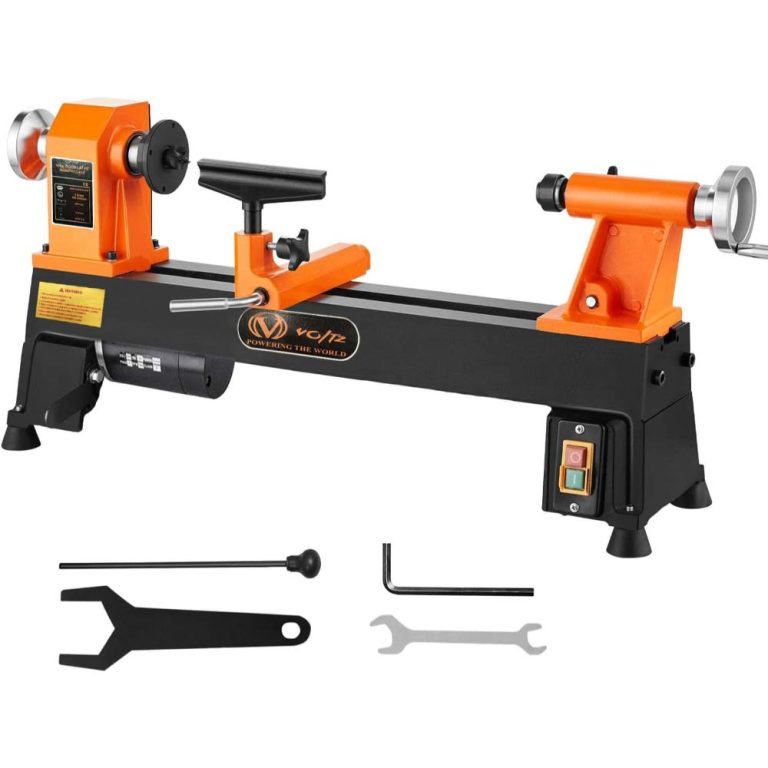
Types of Electric Saws : Cutting Edge
The Evolution of Electric Saws in Woodworking and Construction
Electric saws have revolutionized the woodworking and construction industries, offering efficiency, precision, and power that manual saws simply cannot match. These tools have come a long way since their inception in the late 19th century. The first types of electric saws were bulky, corded machines primarily used in industrial settings. However, technological advancements have led to the development of more compact, powerful, and versatile electric saws suitable for both professional and DIY use. Today, electric saws come in various types, each designed for specific cutting tasks. From the versatile circular saw to the precise jigsaw, these tools cater to a wide range of cutting needs.
The introduction of cordless technology has further enhanced the portability and convenience of electric saws, allowing users to work in remote locations without the need for a power outlet. Additionally, improvements in blade technology have resulted in cleaner cuts and increased durability. Safety features such as blade guards and electric brakes have also been incorporated, making these powerful tools safer to operate. As the demand for efficient cutting solutions continues to grow, manufacturers constantly innovate, introducing new features and improving existing designs. Types of electric saws: This ongoing evolution ensures that electric saws remain at the forefront of woodworking and construction technology, providing users with the tools they need to tackle increasingly complex projects with ease and precision.

Circular Saws: The Versatile Workhorse of Electric Saws
Types of electric saws: Circular saws stand out as one of the most versatile and widely used electric saws in both professional and DIY settings. These handheld power tools feature a circular blade that rotates at high speeds, allowing for quick and efficient straight cuts through various materials. Circular saws excel at making long, straight cuts in wood, plywood, and even thin metal sheets. The design of circular saws allows for easy adjustment of cutting depth and angle, making them suitable for a wide range of tasks. Most circular saws come with a baseplate that provides stability and ensures accurate cuts. Additionally, many models feature laser guides or LED lights to enhance cutting precision.
Types of electric saws: Circular saws are available in both corded and cordless versions, catering to different user needs and work environments. Corded models offer continuous power for extended use, while cordless options provide greater mobility and convenience. The blade size of circular saws typically ranges from 5.5 to 7.25 inches, with larger blades capable of cutting through thicker materials. Some circular saws also come with dust collection systems to maintain a clean work area. For added versatility, many circular saws can be mounted upside down on a table, effectively turning them into small table saws. This feature makes circular saws invaluable for both on-site construction work and workshop projects.
Jigsaws: Masters of Curved and Intricate Cuts
Jigsaws excel in making curved, intricate, and plunge cuts, setting them apart from other electric saws. These versatile tools use a reciprocating blade that moves up and down rapidly, allowing for precise maneuvering and complex cutting patterns. Jigsaws are ideal for cutting shapes, circles, and patterns in wood, plastic, and thin metal sheets. The narrow blade of a jigsaw enables it to make tight turns and follow intricate designs with ease. Most jigsaws feature adjustable speed settings, allowing users to match the cutting speed to the material being cut. This feature ensures clean cuts in a variety of materials, from soft wood to harder materials like ceramic tiles.
Many modern jigsaws come with orbital action settings, which add a slight forward motion to the up-and-down movement of the blade. This orbital action increases cutting efficiency and helps clear sawdust from the cut line. Jigsaws often include features like dust blowers to keep the cutting line visible and laser guides for improved accuracy. The ability to make plunge cuts, where the cut starts in the middle of a piece rather than at the edge, makes jigsaws invaluable for creating cutouts in countertops or flooring. Like circular saws, jigsaws are available in both corded and cordless models, offering options for different work scenarios. The versatility and precision of jigsaws make them essential tools for woodworkers, carpenters, and DIY enthusiasts alike.

Reciprocating Saws: The Demolition Expert
Reciprocating saws, often referred to as “recipro saws” or by the brand name “Sawzall,” are powerful tools designed for heavy-duty cutting and demolition work. These saws use a push-and-pull motion of the blade to cut through various materials, including wood, metal, plastic, and even nails embedded in wood. The long, straight blade of a reciprocating saw allows it to reach into tight spaces and make cuts that would be impossible with other types of saws. This makes reciprocating saws invaluable for tasks such as removing window frames, cutting pipes, or pruning tree branches.
Most reciprocating saws feature variable speed controls, allowing users to adjust the cutting speed based on the material being cut. Many models also include an orbital action setting, which adds a slight circular motion to the blade’s movement, increasing cutting efficiency in certain materials. The ability to change blades quickly is a key feature of reciprocating saws, allowing users to switch between different blade types for various materials.
Some reciprocating saws offer tool-less blade changes, further enhancing their convenience. Ergonomic designs with vibration reduction technology help minimize user fatigue during extended use. Cordless reciprocating saws have gained popularity in recent years, offering increased mobility for outdoor work or in areas without easy access to power outlets. The versatility and power of reciprocating saws make them essential tools for construction workers, plumbers, electricians, and anyone involved in renovation or demolition work.
Table Saws: Precision and Power for Large-Scale Projects
Table saws represent the cornerstone of many woodworking shops, offering unparalleled precision and power for large-scale cutting projects. These stationary power tools consist of a circular saw blade mounted on an arbor and protruding through the top of a table. The blade height can be adjusted to control the depth of the cut, while the angle can be changed for bevel cuts. Table saws excel at making long, straight cuts in large pieces of wood or sheet materials. They are particularly useful for ripping (cutting along the grain of wood) and crosscutting (cutting across the grain).
Types of electric saws: Most table saws come with a rip fence, which guides the material being cut and ensures straight, parallel cuts. Many models also include a miter gauge for making angled cuts. Safety features such as blade guards, anti-kickback pawls, and riving knives are standard on modern table saws, helping to prevent accidents during operation. Some advanced table saws incorporate flesh-sensing technology that instantly stops the blade if it comes into contact with skin.
Table saws are available in various sizes and types, including portable jobsite saws, contractor saws, and heavy-duty cabinet saws. Portable models offer convenience for on-site work, while cabinet saws provide the highest level of precision and power for professional woodworking shops. The ability to use different blade types allows table saws to cut materials beyond wood, including plastics and non-ferrous metals. With their combination of power, precision, and versatility, table saws remain indispensable tools for serious woodworkers and construction professionals.

Miter Saws: The Go-To Tool for Precise Angled Cuts
Miter saws, also known as chop saws, specialize in making quick, accurate crosscuts and angled cuts in wood and other materials. These saws feature a circular blade mounted on a swing arm that pivots left and right for angled cuts. The design of miter saws allows for precise control over the angle of the cut, making them ideal for tasks such as cutting moldings, trim work, and picture frames. Most miter saws can make cuts at common angles like 15, 22.5, 30, and 45 degrees, with detents (preset stops) for quick adjustment.
Compound miter saws add the ability to tilt the blade for bevel cuts, allowing for even more complex angled cuts. Sliding compound miter saws further extend the cutting capacity by allowing the saw head to move along rails, enabling longer cuts. Many miter saws include laser guides or LED shadow lines to enhance cutting accuracy. Dust collection systems are common features, helping to maintain a clean work area. The size of miter saws is typically determined by the blade diameter, with 10-inch and 12-inch models being the most common.
Larger blade sizes allow for cutting wider and thicker materials. Some miter saws offer dual-bevel capability, allowing the saw to tilt both left and right without needing to flip the workpiece. This feature is particularly useful for complex trim work. With their combination of precision, speed, and ease of use, miter saws have become essential tools for carpenters, woodworkers, and DIY enthusiasts working on projects requiring accurate angled cuts.
Band Saws: Versatility in Curved and Straight Cuts
Types of electric saws: Band saws offer a unique combination of versatility and precision, making them valuable tools in both woodworking and metalworking. These saws use a continuous loop of toothed metal blade that runs around two or more wheels to cut through materials. The design of band saws allows for both straight cuts and intricate curved cuts. Making them ideal for a wide range of applications. In woodworking, band saws excel at cutting curves, resawing (cutting boards into thinner pieces), and making rip cuts in thicker materials. They can also be used for cutting joinery, such as tenons and dovetails.
Metalworking band saws are designed to cut through various metals, including steel and aluminum. The continuous motion of the band saw blade allows for smooth, efficient cutting with minimal waste. Most band saws feature adjustable blade guides and tension systems to ensure accurate cuts and prolong blade life.
Larger band saws typically offer greater throat capacity and can handle thicker materials. Some band saws come with tilting tables, allowing for angled cuts. Variable speed settings on many models enable users to adjust the cutting speed based on the material being cut. Portable band saws have gained popularity for their ability to make curved cuts in hard-to-reach areas. Particularly in plumbing and electrical work. With their versatility and precision, band saws have become essential tools in many workshops. Offering capabilities that complement other types of saws.
Oscillating Multi-Tools: The Swiss Army Knife of Power Saws
Oscillating multi-tools, while not exclusively saws, have become increasingly popular due to their versatility and ability to perform sawing tasks in tight spaces. These tools use a side-to-side oscillating motion at high speeds, allowing for precise cutting, sanding, and scraping. The saw attachments for oscillating tools excel at making plunge cuts, flush cuts, and detailed cuts in wood, drywall, and even soft metals. One of the key advantages of oscillating multi-tools is their ability to make cuts in areas that are inaccessible to other types of saws.
This makes them invaluable for tasks . Such as undercutting door frames, removing grout, or making precise cutouts in flooring or walls. Most oscillating tools feature a quick-change system for attachments, allowing users to switch between sawing, sanding, and scraping functions quickly. The compact size and ergonomic design of these tools make them comfortable to use for extended periods. Many models offer variable speed settings, allowing users to match the tool’s speed to the task at hand.
Cordless oscillating multi-tools have gained popularity for their portability and convenience, especially for small home improvement projects. Some advanced models include features like tool-less blade changes and LED lights to illuminate the work area. The versatility of oscillating multi-tools has made them popular among DIY enthusiasts, remodelers, and professionals in various trades. While they may not replace dedicated saws for large-scale cutting tasks. Oscillating multi-tools provide a unique solution for precise, detailed work in confined spaces.

Track Saws: Precision and Portability Combined
Track saws, also known as plunge-cut saws, combine the portability of circular saws with the precision of table saws. These innovative tools consist of a circular saw that runs along a guide track, ensuring perfectly straight cuts. The design of track saws allows for precise, splinter-free cuts in sheet materials such as plywood, MDF, and laminate flooring. One of the key advantages of track saws is their ability to make long, straight cuts without the need for a large, stationary table saw. This makes them ideal for on-site work or for workshops with limited space.
The plunge-cut feature of track saws allows users to start cuts in the middle of a sheet. Which is particularly useful for making cutouts or working with pre-finished materials. Most track saws come with anti-splinter strips on the track, ensuring clean cuts on both sides of the blade. Many models feature depth-of-cut adjustments and bevel capabilities for angled cuts. Dust collection systems are common on track saws, helping to maintain visibility and keep the work area clean.
Some advanced track saws offer features like variable speed control and soft-start motors for improved control and performance. The modular nature of track systems allows users to connect multiple tracks for longer cuts. While primarily designed for woodworking, some track saws can also cut materials like aluminum with the appropriate blades. The combination of precision, portability, and versatility has made track saws increasingly popular among both professionals and serious DIY enthusiasts.
Choosing the Right Electric Saw for Your Project
Types of electric saws: Selecting the appropriate electric saw for a project is crucial for achieving the best results efficiently and safely. For general-purpose cutting and DIY projects, a circular saw or jigsaw might be the best starting point due to their versatility. Circular saws excel at making long, straight cuts in wood and sheet materials, while jigsaws are ideal for curved and intricate cuts.
For precision work and angled cuts, particularly in woodworking and trim installation, a miter saw is often the tool of choice. Table saws are essential for large-scale woodworking projects that require consistent, precise cuts in large pieces of material. When working on demolition or renovation projects, a reciprocating saw is invaluable for its ability to cut through various materials in tight spaces. For metalworking or cutting thick materials, a band saw might be the most suitable option. Track saws offer a good balance of precision and portability. Making them ideal for working with large sheet materials, especially on job sites.
Oscillating multi-tools, while not dedicated saws, provide a versatile solution for detail work and cuts in confined spaces. When choosing an electric saw, consider factors such as power source (corded vs. cordless), blade size, cutting capacity, and additional features like dust collection systems or laser guides. It’s also important to consider the frequency of use and the level of precision required. For occasional DIY projects, a mid-range saw might suffice, while professional users may benefit from investing in higher-end models with advanced features. Ultimately, the right electric saw should match the specific needs of the project while providing safety, efficiency, and quality results.

